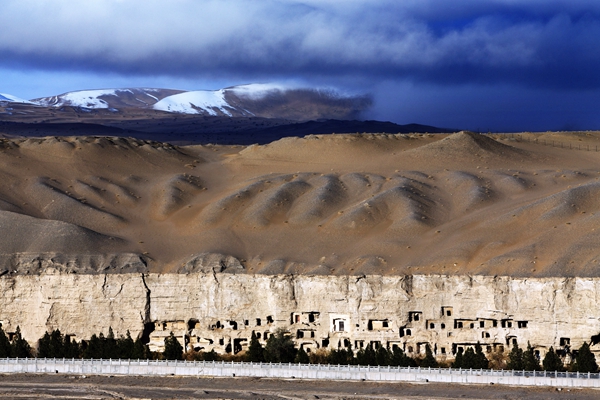 |
|
[Photo provided to China Daily] |
Reaching far
Zhang Yuanlin, chief librarian and director of the center for research on the Silk Road and Dunhuang at the academy, said the Mogao Caves are fascinating examples of the cultural, religious and social interaction that China hosted in ancient times through its role as a trading hub.
The cave artifacts depict artistic elements beyond India, and Central and Western Asia, to encompass influences from as far away as Greece and Rome, he said.
One cave mural of a horse-riding solar deity resembles the Apollo of Greek mythology, the Mithra sun god of Persian Zoroastrianism and the Surya sun god of the Vedic religion, according to Zhang Yuanlin.
Another cave contained images of 12 ecliptical signs, with some resembling Western descriptions of zodiac constellations such as Scorpius, Gemini, Cancer and Pisces, he said.
Similarly, Nestorian crosses and Manichean scriptures were found in the Dunhuang cave library and caves in the northern part of Mogao. Until the late 13th century, when Venetian merchant Marco Polo passed by the area, these religions were still in existence, according to his research.
"Through these artifacts, Dunhuang reflected a cultural and artistic pluralism. In many ways, that embodies the interaction and globalization today in line with the Belt and Road Initiative," Zhang Yuanlin said.
Yu Zongren, the deputy director of the academy's conservation research department, said that Dunhuang's historic global role makes it even more crucial to maintain and build on the conservation of its relics for future generations.
"We've developed from the initial, urgent need to protect the artifacts in the early years, to the scientific approach of conservation since our work with foreign institutions of the recent decades," Yu said.
"That covers the people-to-people exchanges, training and research that have helped us get to the level we're at now."